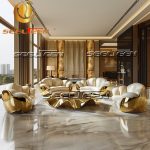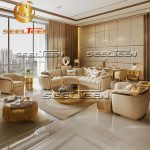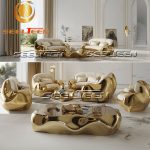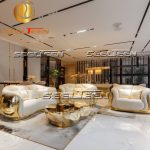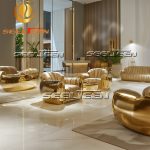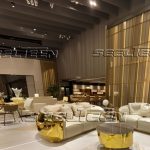Types Of Brass Table Top
Types Of Brass Table Top-If you’re interested in our website products, please contact us.
Brass is a fabulous, attractive and long-lasting material for a table top and so is a material we thoroughly recommend.
Brass table tops are available in three finishes, one of which should suit your needs (and you can also specify various edge details).
The process of making a table top from a sheet of ‘mill-finished’ brass will leave the ‘raw’ top looking patchy and unfinished, so brass table tops need finishing after they have been fabricated – this limits the available finishes because this finishing work has to be carried out by the fabricator, who does not have access to factory-scale machinery. The three available finishes are shown below.
In choosing a brass table top, it is crucial to appreciate the nature of such tops and that they do scratch, mark and age.
Mirror-Polished Brass

Mirror-polished brass in natural brass that has been made into a tabletop and then carefully and consistently buffed/polished to give a highly shiny, reflective surface. Mirror-polished brass always has a (very) slight grain that runs with the length of the sheet.
Mirror-polished brass table tops are neither waxed (which ruins the mirror reflection) nor lacquered (as lacquer will not stick firmly to such a smooth surface)
To retain the highly polished appearance requires very regular re-polishing with Brasso/Bio-mex (we have been told that lemon juice helps). Some restaurants will do this every single day.
It’s important to note that scratches and scuffs show up very clearly on such smooth polished surfaces.
Satin Brass
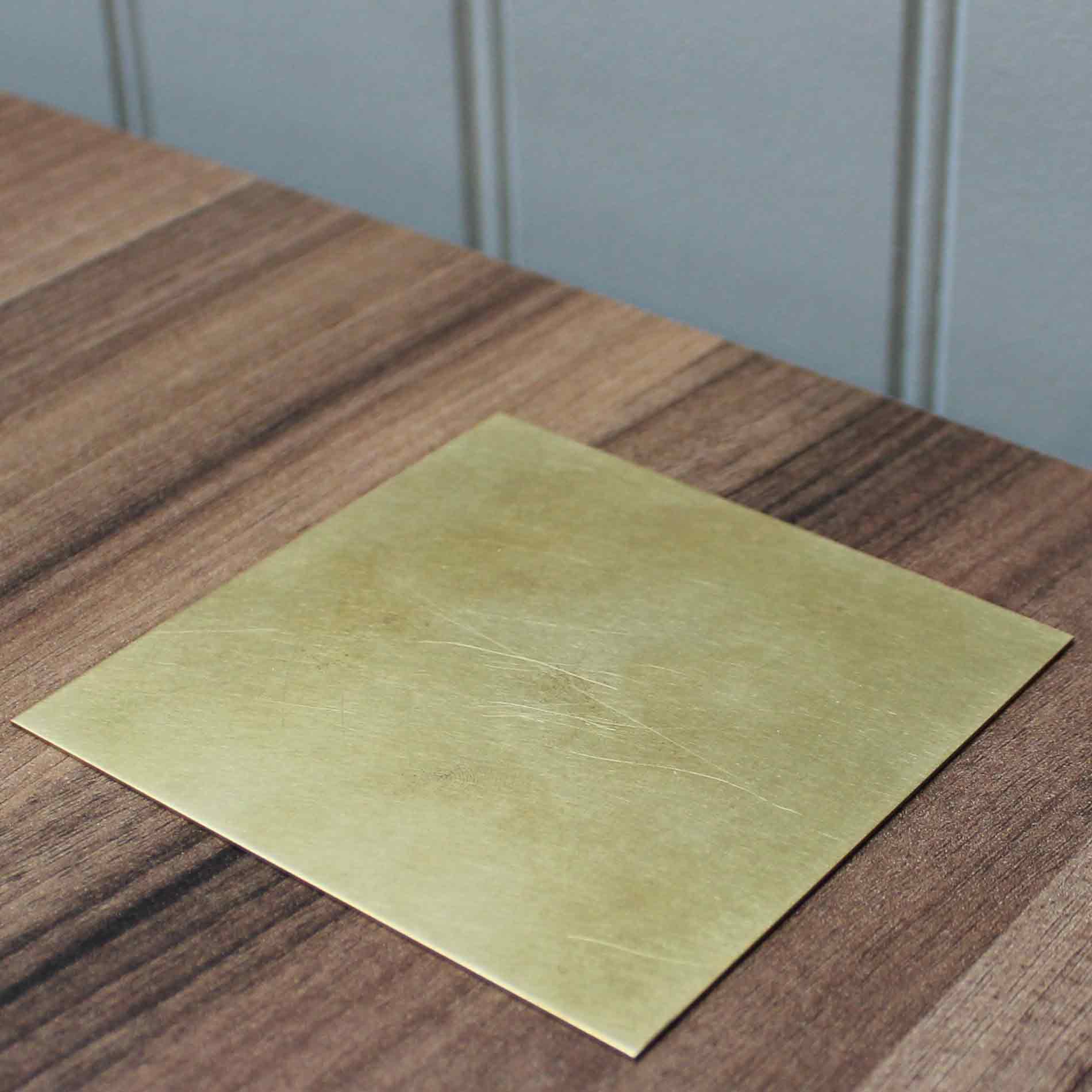
Satin brass is also known as matt brass; the finish is created by carefully and consistently sanding a natural brass top.
Satin brass is usually then sealed with beeswax polish, bringing out the deep tone of the material. This does not stop the metal from continuing to acquire a patina naturally but does moderate its progress.
Satin brass can also be lacquered, which will maintain the original appearance. It is important to remember that lacquer is vulnerable to damage, such as scratching, which cannot simply be repaired; for this reason, we resist lacquering brass tops.
Scratches and scuffs will show up clearly on satin brass, albeit probably less so than on mirror polished tops and perhaps more fittingly adding to the patina.
Aged Brass

Aged Brass is a more ‘antique’ finish, created through chemical and acid application to the brass top after it has been constructed, but before waxing or lacquering. The tops will be similar in appearance to each other, but not identical because the shade and pattern of the hand-applied finish will vary.
Aged brass is usually then sealed with beeswax polish, to give a little protection. This does not stop the metal from continuing to acquire more of a patina but does moderate its progress.
Aged brass can also be lacquered, which will maintain the original appearance. It is important to remember that lacquer is vulnerable to damage, such as scratching, which cannot simply be repaired; for this reason, we resist lacquering brass tops
Satin (left) vs Brushed Brass (right)
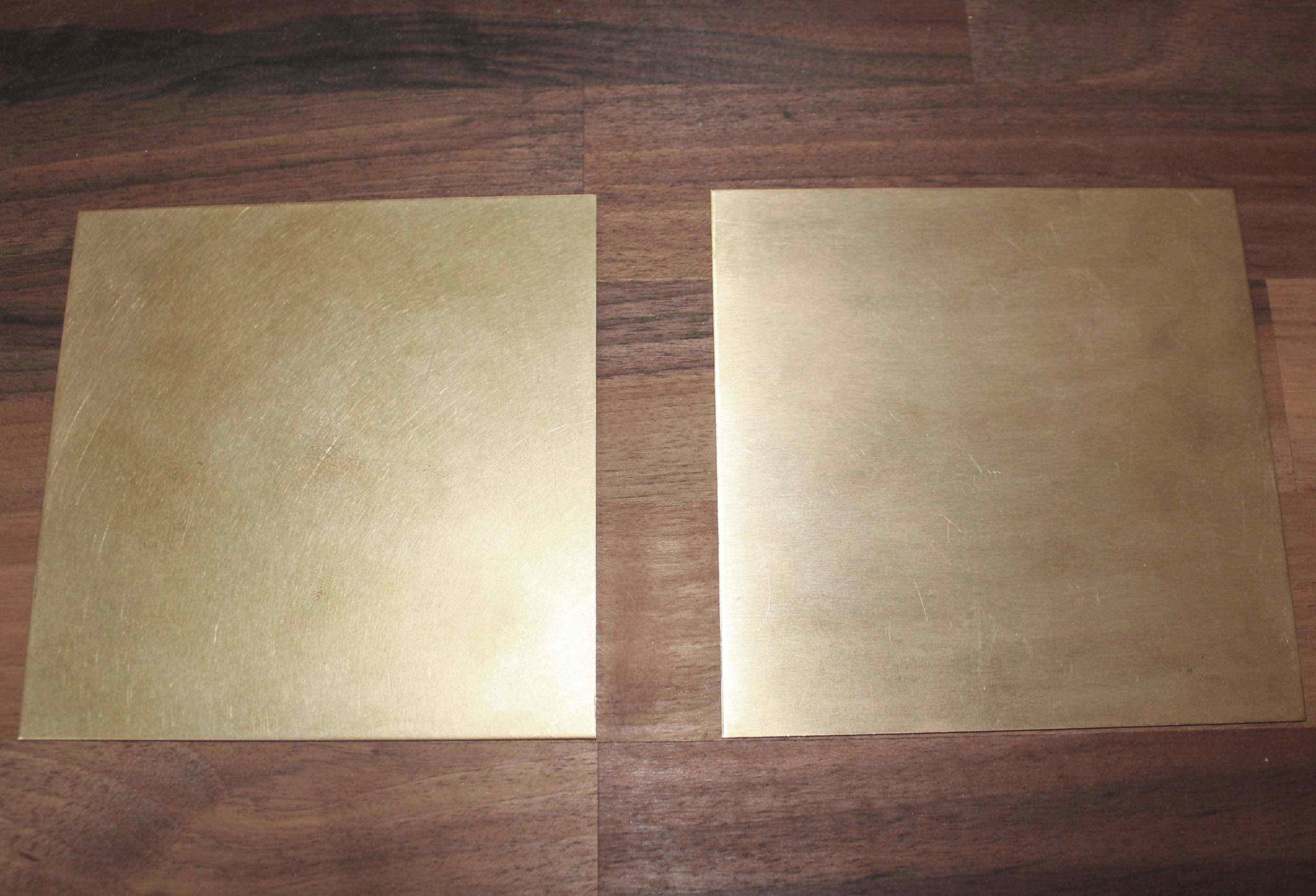
We are regularly asked for brushed brass table tops – a finish that does not appear in the list above of the three finishes that we supply. Brushed brass has, as the name suggests, a directional grain that is created when it is ‘brushed’ by a wide machine at the end of its production process.
We do not supply table tops in brushed brass because this type of factory-produced grain tends to get damaged during the creation of a table top and then cannot be repaired without the same large machine that first created it.
We strongly recommend satin brass as a more than satisfactory alternative – the photos show the similarity between the two finishes.
How Brass Ages With Use
Metal surfaces quickly tarnish when exposed to air or acidic/alkaline materials, forming a distinctive matt layer or ‘patina’. The patina increases over time and reacts with liquids and other materials to create a distinct aesthetic.
We can use this material in many places, such as hotel rooms, maybe it will make the hotel be more luxury: Best Hotel room furniture ideas for happy customers
Find us on Facebook, Instagram and don’t miss a single breath


